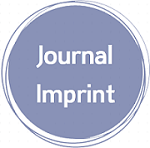Suitability System of Microbiological Method for Nystatin Potency Determination in the Routine Analysis Using Agar Diffusion Method
Downloads
Doi:10.28991/SciMedJ-2021-0304-2
Full Text:PDF
Downloads
Caffrey, P., De Poire, E., Sheehan, J., & Sweeney, P. (2016). Polyene macrolide biosynthesis in streptomycetes and related bacteria: recent advances from genome sequencing and experimental studies. Applied Microbiology and Biotechnology, 100(9), 3893–3908. doi:10.1007/s00253-016-7474-z.
Lyu, X., Zhao, C., Hua, H., & Yan, Z. (2016). Efficacy of nystatin for the treatment of oral candidiasis: a systematic review and meta-analysis. Drug Design, Development and Therapy, 1161. doi:10.2147/dddt.s100795.
C. Johnson; T. (2021). What is Candidiasis?. WebMD. Availble online: https://www.webmd.com/skin-problems-and-treatments/guide/what-is-candidiasis-yeast-infection (accessed on April 2021).
Kaufman, D., Liken, H., & Odackal, N. J. (2019). Diagnosis, Risk Factors, Outcomes, and Evaluation of Invasive Candida Infections. Infectious Disease and Pharmacology, 69–85. doi:10.1016/b978-0-323-54391-0.00007-2.
Millsop, J. W., & Fazel, N. (2016). Oral candidiasis. Clinics in Dermatology, 34(4), 487–494. doi:10.1016/j.clindermatol.2016.02.022.
Ozturk, M. A., Gunes, T., Koklu, E., Cetin, N., & Koc, N. (2006). Oral nystatin prophylaxis to prevent invasive candidiasis in Neonatal Intensive Care Unit. Mycoses, 49(6), 484–492. doi:10.1111/j.1439-0507.2006.01274.x.
Young, G. A. R., Bosly, A., Gibbs, D. L., & Durrant, S. (1999). A double-blind comparison of fluconazole and nystatin in the prevention of candidiasis in patients with leukaemia. European Journal of Cancer, 35(8), 1208–1213. doi:10.1016/s0959-8049(99)00102-1.
National Center for Biotechnology Information (2021). PubChem Compound Summary for CID 138403272. Available online: https://pubchem.ncbi.nlm.nih.gov/compound/138403272 (accessed on October 2021).
Lancelin, J. M., & Beau, J. M. (1995). Stereostructure of glycosylated polyene macrolides: the example of pimaricin. Bulletin de la Société chimique de France, 2(132), 215-223.
Martin, J. F., & McDaniel, L. E. (1977). Production of Polyene Macrolide Antibiotics. Advances in Applied Microbiology Volume 21, 1–52. doi:10.1016/s0065-2164(08)70037-6.
Keller; M. D. (2017). The effect of amphotericin B on yeast growth; & the isolation; & identification of sterols for protozoan protein X-ray crystallography (Doctoral dissertation). Available online: https://ttu-ir.tdl.org/handle/2346/72716 (accessed on October 2021).
Dafale, N. A., Semwal, U. P., Agarwal, P. K., Sharma, P., & Singh, G. N. (2015). Development and validation of microbial bioassay for quantification of Levofloxacin in pharmaceutical preparations. Journal of Pharmaceutical Analysis, 5(1), 18–26. doi:10.1016/j.jpha.2014.07.007.
Pfaller, M. A., Krogstad, D. J., Granich, G. G., & Murray, P. R. (1984). Laboratory evaluation of five assay methods for vancomycin: bioassay, high-pressure liquid chromatography, fluorescence polarization immunoassay, radioimmunoassay, and fluorescence immunoassay. Journal of Clinical Microbiology, 20(3), 311–316. doi:10.1128/jcm.20.3.311-316.1984.
Greco; G. M. (1998). Microbiological assay systems for the analysis of antibiotics in pharmaceutical formulations (Ph.D. Dissertation). The State University Of New Jersey; USA;
Pinto; T. J. A.; Lourenco; F. R.; & Kaneko; T. M. (2007). Microbiological assay of Gentamycin employing an alternative experimental design. In AOAC Annual Meeting; & Exposition. Vol. 121; p. 157.
Saviano, A. M., Francisco, F. L., & Lourenço, F. R. (2014). Rational development and validation of a new microbiological assay for linezolid and its measurement uncertainty. Talanta, 127, 225–229. doi:10.1016/j.talanta.2014.04.019.
Dafale, N. A., Agarwal, P. K., Semwal, U. P., & Singh, G. N. (2013). Development and validation of microbial bioassay for the quantification of potency of the antibiotic cefuroxime axetil. Anal. Methods, 5(3), 690–698. doi:10.1039/c2ay25848j.
Cazedey, E. C. L., & Salgado, H. R. N. (2011). Development and Validation of a Microbiological Agar Assay for Determination of Orbifloxacin in Pharmaceutical Preparations. Pharmaceutics, 3(3), 572–581. doi:10.3390/pharmaceutics3030572.
Yamamoto, C. H., & Pinto, T. J. A. (1996). Rapid Determination of Neomycin by a Microbiological Agar Diffusion Assay Using Triphenyltetrazolium Chloride. Journal of AOAC International, 79(2), 434–440. doi:10.1093/jaoac/79.2.434.
Lourenço, F. R., & Pinto, T. de J. A. (2009). Comparison of three experimental designs employed in gentamicin microbiological assay through agar diffusion. Brazilian Journal of Pharmaceutical Sciences, 45(3), 559–566. doi:10.1590/s1984-82502009000300022.
Hovstadius, B., Åstrand, B., & Petersson, G. (2009). Dispensed drugs and multiple medications in the Swedish population: an individual-based register study. BMC Clinical Pharmacology, 9(1). doi:10.1186/1472-6904-9-11.
Dafale, N. A., Semwal, U. P., Rajput, R. K., & Singh, G. N. (2016). Selection of appropriate analytical tools to determine the potency and bioactivity of antibiotics and antibiotic resistance. Journal of Pharmaceutical Analysis, 6(4), 207–213. doi:10.1016/j.jpha.2016.05.006.
Nam, J.-H., Shin, J.-H., Kim, T.-H., Yu, S., & Lee, D.-H. (2019). Comparison of biological and chemical assays for measuring the concentration of residual antibiotics after treatment with gamma irradiation. Environmental Engineering Research, 25(4), 614–621. doi:10.4491/eer.2019.270.
Nahar, S., Khatun, M. S., & Kabir, M. S. (2020). Application of microbiological assay to determine the potency of intravenous antibiotics. Stamford Journal of Microbiology, 10(1), 25–29. doi:10.3329/sjm.v10i1.50729.
Hewitt; W. (2004). Microbiological assay for pharmaceutical analysis: a rational approach. CRC press. doi:10.1201/b12428.
European Pharmacopoeia Commission. (2004). Statistical analysis of results of biological assays; & tests. European Pharmacopoeia; 571-600.
United States Pharmacopoeia (USP); & National Formulary (NF). (2021). ‹81› Antibiotics-Microbial assays; USP43-NF38; US Pharmacopeial Convention Inc.; Rockville; p. 86-93.
Loureno, F. R., Kaneko, T. M., & Pinto, T. D. J. A. (2007). Validation of Erythromycin Microbiological Assay Using an Alternative Experimental Design. Journal of AOAC International, 90(4), 1107–1110. doi:10.1093/jaoac/90.4.1107.
Eissa, M. E. A. (2018). Microbiological quality of purified water assessment using two different trending approaches: A case study. Sumerianz Journa l of Scientific Research, 1(3), 75-79.
Eissa, M. E., & Abid, A. M. (2018). Application of statistical process control for spotting compliance to good pharmaceutical practice. Brazilian Journal of Pharmaceutical Sciences, 54(2). doi:10.1590/s2175-97902018000217499.
Rashed; E. R.; & Eissa; M. E. (2020). Long-term monitoring of Cancer Mortality Rates in USA: A descriptive analysis using statistical process control tools. Iberoamerican Journal of Medicine; 2(2); 55-60. doi:10.5281/zenodo.3740610.
Eissa; M. E. (2018). Application of attribute control chart in the monitoring of the physical properties of solid dosage forms. Journal of Progressive Research in Modern Physics; & Chemistry (JPRMPC); 3(1); 104-113.
Mohamed; R. A.; & Mariam; H. M. (2017). Using Completely Randomized Design of Parallel Linear Model for Estimating the Biological Potency of Human Insulin Drugs: An Empirical Study. Biostatistics & Biometrics Open Access Journal; 3(4); 115-121.
Mairesse, A., Wauthier, L., Courcelles, L., Luyten, U., Burlacu, M., Maisin, D., … Gruson, D. (2021). Biological variation and analytical goals of four thyroid function biomarkers in healthy European volunteers. Clinical Endocrinology, 94(5), 845–850. doi:10.1111/cen.14356.
Cochran, W. G. (1951). Testing a Linear Relation among Variances. Biometrics, 7(1), 17. doi:10.2307/3001601.
European Pharmacopoeia (2002) 4th Ed.; Council of Europe; Strasbourg; France.
Swift, M. L. (1997). GraphPad Prism, Data Analysis, and Scientific Graphing. Journal of Chemical Information and Computer Sciences, 37(2), 411–412. doi:10.1021/ci960402j.
Motulsky; H. J. (2003). Prism 4 statistics guide—statistical analyses for laboratory & clinical researchers. GraphPad Software Inc.; San Diego; CA; 122-126.
Eissa; M. E. (2018). Variable & attribute control charts in trend analysis of active pharmaceutical components: Process efficiency monitoring & comparative study. Experimental Medicine (EM); 1(1); 32-44.
Eissa; M. (2018). Evaluation of microbiological purified water trend using two types of control chart. European Pharmaceutical Review; 23(5); 36-38.
Sullivan, J. H., & Woodall, W. H. (1996). A Control Chart for Preliminary Analysis of Individual Observations. Journal of Quality Technology, 28(3), 265–278. doi:10.1080/00224065.1996.11979677.
Fatimah, Sayuti, M., & Pertiwi, E. P. (2018). Quality control of palm kernel oil using Individual Moving Range (I-MR) chart. MATEC Web of Conferences, 204, 01006. doi:10.1051/matecconf/201820401006.
Henderson; G. R. (2011). Six Sigma quality improvement with MINITAB. John Wiley & Sons.
- This work (including HTML and PDF Files) is licensed under a Creative Commons Attribution 4.0 International License.












